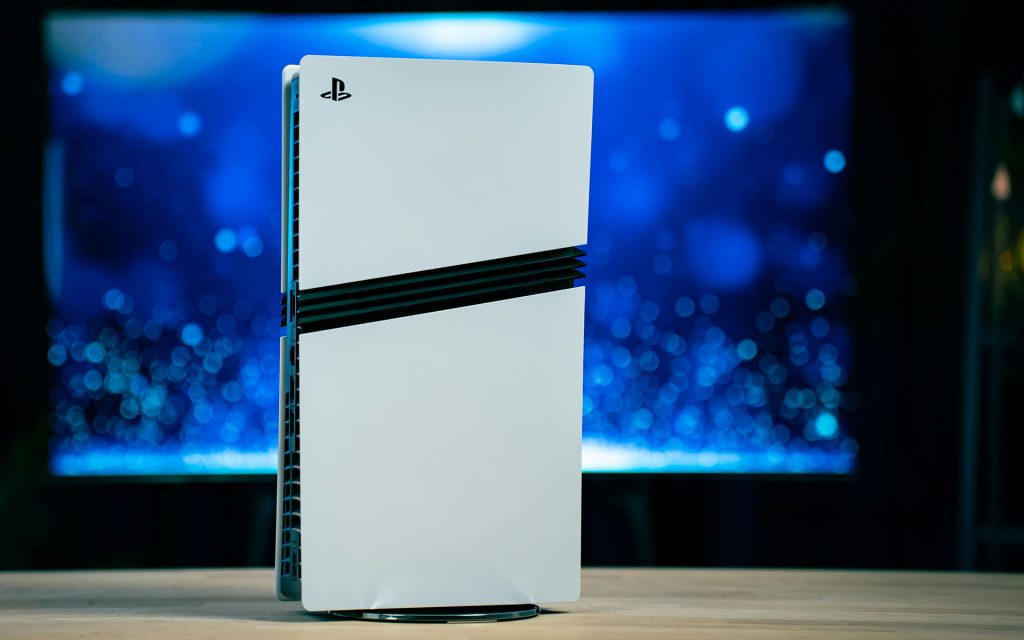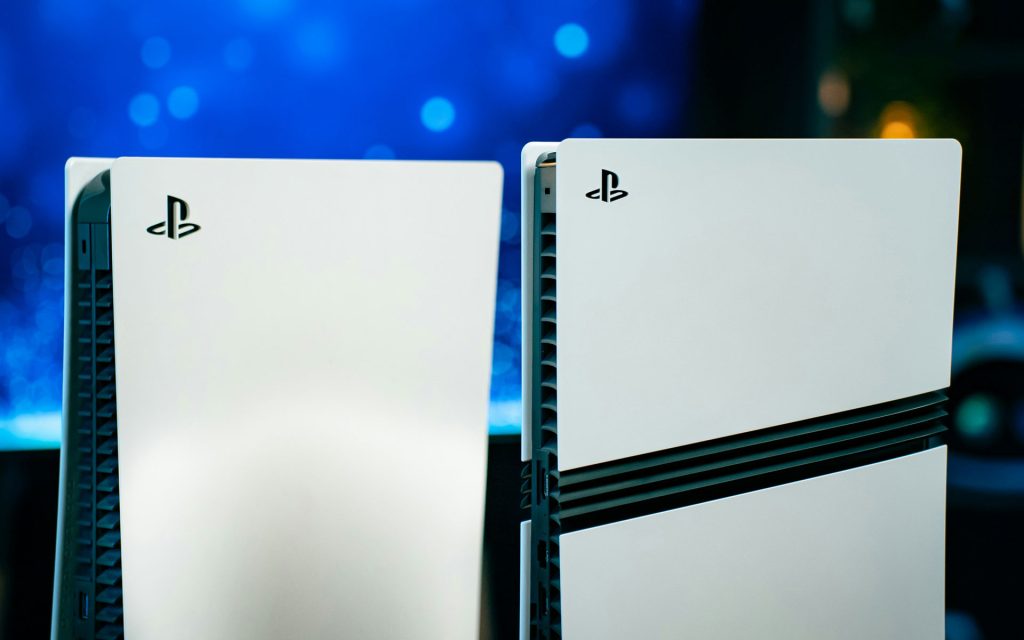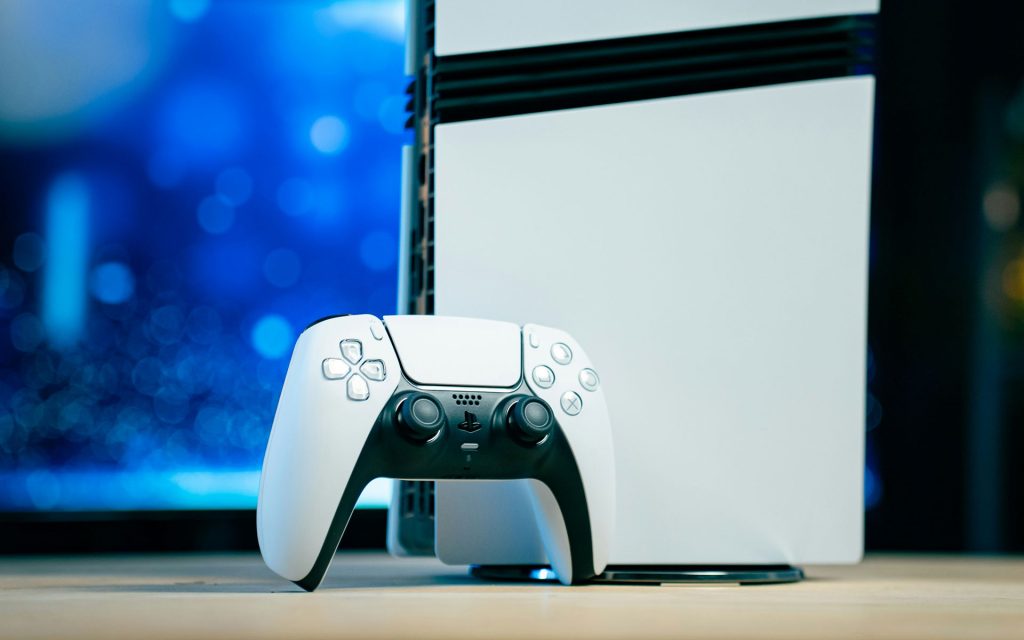PlayStation5 Pro, one year in: worth it now?
Sony’s most powerful home console is still a tough sell, but that might change in 2026 – here’s why
KOSTAS FARKONAS
PublishED: November 7, 2025

So, it has been a year – to the day – since Sony released its most capable gaming console yet, the PlayStation5 Pro, a product that caused speculation, excitement, confusion and controversy in equal measure. It’s a system that’s forward thinking and decidedly old-school at the same time: it sports cutting-edge tech associated with the future of gaming while also being a part of a 5-year-old, traditional home entertainment ecosystem. It is the most powerful product of its kind – also the most expensive one – and definitely unique: a noteworthy example of consumer electronics, a herald of things to come and a videogames luxury item, all wrapped into one.
Yours truly had called the PS5 Pro “the first cross-gen console” all the way back in April 2024, explained in detail what it is able to do in September 2024, got it early in late October 2024, tested it extensively and, on its launch day, concluded that “it’s not a must-buy for most people, it needs time to show its potential but it will be a great option for PlayStation gamers in the future”. That opinion was based on the PS5 Pro-enhanced games available at the time and the notion that more of them were coming over the next 6-12 months.
Fast forward to today and the PS5 Pro actually costs more than what it did at launch (it’s now $749 from $699), the PlayStation Store offers fifty five PS5 games that are – in some way or another – PS5 Pro Enhanced, while some of the biggest 2026 titles launched with PS5 Pro Enhanced options by default. So what does yours truly make of Sony’s system now in terms of value? It’s still… complicated. Here’s why.
First-party support is great, third-party support is disappointing
One would expect of Sony nothing less than to demonstrate what its new gaming system can do by upgrading its own titles accordingly – so that’s exactly what the company did over the last year. It gave everyone a taste at launch with a number of titles leveraging PSSR and high-quality raytracing, it made sure to update a few more of its titles over the following months and saw to it that flagship first party-developed or -published titles (such as Ghost of Yotei and Death Stranding 2 respectively) support the PS5 Pro from the very beginning.

Yours truly can attest to the fact that the latest PlayStation delivers the absolute best versions of the two aforementioned games and that, through timely software updates, a number of his favorite past PS5 hits – such as Returnal or Spider-man 2 or Stellar Blade – became more enjoyable to play. But these were all first-party titles. Looking at the PS5 library and the 2026 PS5 release schedule as a whole, very few third-party games stand out as really good examples of entertainment experiences being improved on a PS5 Pro. There’s Cyberpunk 2077, there’s Lies of P, there’s Control, there’s Hellblade 2, there’s Assassin’s Creed Shadows and… that’s about it, really.
This is a problem. Yes, we already knew that PS5 Pro support would be implemented in different ways by different developers in different games, but results vary so wildly that nobody knows what to expect from that “PS5 Pro Enhanced” label most of the time. Plus, not enough PS5 titles from the system’s back catalogue even got a basic PS5 Pro patch for e.g. resolution upscaling or frame rate improvements. It’s clear that, despite Sony’s marketing might and developer relations, most publishers intend to take their time in order to see how the PS5 Pro does in terms of sales before committing to properly supporting it. It’s understandable, but it’s also disappointing.
Three reasons why 2026 could be great for PS5 Pro owners
So support for the most powerful PlayStation’s advanced capabilities leaves a lot to be desired right now… but there may be a reason for that (or three). PSSR, for instance, Sony’s AI-based upscaling algorithm, was and clearly is a work-in-progress with a lot of room for improvement. It t’s one of those things that are supposed to always be a work-in-progress – in the sense that Sony will continue to improve its effectiveness and results for a long time – but it seems the v1.0 version of PSSR that had to be ready for the PS5 Pro launch was (a) not extensively trained or tested on many games other than those of PlayStation Studios and (b) not delivered to third-party developers until rather late in the development cycle of this console.

Both of these issues are seemingly going to be addressed in 2026. Mark Cerny has officially confirmed that the next version of PSSR, which will be used for the majority of next year’s PS5 Pro-compatible titles, is based on the work Sony is doing with AMD as part of the Project Amethyst collaboration. PSSR v2.0 – for lack of a better term – is developed using the same neural network and the same training recipe as AMD’s excellent FSR4, which was a huge improvement over FSR3.1.
The two algorithms are not the same (FSR4 requires AMD’s RDNA4 hardware for certain features), but they have a lot in common and it’s widely believed that this will lead to better results – both in terms of performance and image quality – on the PS5 Pro. Word on the Web is that most of the necessary work for PSSR v2.0 is basically done, so the relevant software should be seeded to developers (including third party ones) by Q1 2026.
That is also the second reason why PlayStation5 Pro owners can expect stronger support for their system come 2026: there is a high chance that many third-party developers and publishers were actually aware of the changes coming to PSSR through Sony’s collaboration with AMD… so they chose to not do the same work twice, but rather wait for v2.0 before committing. If true, this makes a lot of sense – especially in the case of smaller development teams and indies that need to manage resources in a careful manner – so it will be interesting to see how big of an improvement in terms of PS5 Pro support can PSSR v2.0 bring about over the next 12-18 months.
The third possible reason why 2026 may prove to be an important year for Sony’s most powerful console to date is none other than, well, next year’s most important game by far: Grand Theft Auto VI. This game will definitely drive a lot of PlayStation5 sales, finally convincing millions of players to leave the PS4 behind – so even if a small percentage of those people go for a PS5 Pro, that would give its user base a huge boost. The PS5 Pro is easily capable of delivering the best version of GTA VI, so – in the case that it does that in a clear, immediately obvious way – it may convince more than a few current PS5 owners to get a Pro… just for that one game. This is GTA we’re talking about, after all.
PSSR v2.0 may be even more important in the context of GTA VI, too. It would normally be very difficult – and unusual, given Rockstar’s track record – for a current generation console to deliver GTA VI at a steady frame rate of more than 30 FPS at the level of graphics quality demonstrated in the May trailer above. Realistically speaking, 30 FPS would be the acceptable level of performance expected of a PS5 or Xbox Series X.
Well, if rumors about an extensive marketing collaboration between Sony and Take-Two on GTA VI are true, it would make sense for Rockstar to leverage PSSR v2.0 in order to hit 60 FPS on the PS5 Pro. Concessions would still have to be made, but “the only console on which gamers can enjoy GTA VI at 60 FPS” as a marketing point for the PS5 Pro would be hard to ignore come November 2026, no?
A premium product in search of better value – and a killer app
That’s all well and good, obviously, but consumers should never, ever make tech product purchases based on promised upgrades or potential improvements: it’s all about what said products offer right now, so the same goes for the PS5 Pro. Is Sony’s most powerful gaming system currently worth $749? In a word, “no”. In more words, “for most people… not yet”. See, yours truly does believe that the PS5 Pro has a lot of potential – and he does believe that Sony will make it much better through software updates over time – but the proof is in the pudding: until more games perform materially better on it, the extra cost compared to a PS5 cannot be easily justified.

Sony, of course, already knows this: the PlayStation5 Pro was never meant to be a mainstream product or it wouldn’t be coming with that price tag. Still, it’s somewhat disappointing to think that the PS4 Pro managed to grab one out of five PS4 sales overall (albeit at a much lower price point), while the PS5 Pro (a dramatically more powerful system capable of so much more) will not come even remotely close to that. Yes, it is a cross-gen PlayStation that serves more than one purpose – unit sales will not be the only way its success will be measured in the fullness of time – but it would be nice to see all that power and smarts put to good use in a timely manner.
The irony here is that, out of context, the PlayStation5 Pro is not actually that expensive for what it is: one year later, for instance, it’s still not possible to get (or even build) a gaming PC offering 2TB of fast SSD storage, Wi-Fi 7, a very good controller and performance of 30-60FPS on average, in all modern games, for $749 or less. One would need around a grand for something demonstrably better than that. The PS5 Pro is a great piece of hardware “in a vacuum”, but for a PlayStation console it is expensive simply because the majority of PS5 games do not perform as well as they could on it.

At the end of the day, what the PS5 Pro lacks is pretty obvious: it lacks what we used to call “a killer-app” back in the day. That is, one unique, remarkable, truly special game that runs on the Pro so much better than on the PS5 (better than most mid-tier gaming PCs even), delivering such a high level of image quality and/or performance, that it simply leaves no room for doubt.
It’s fair to say that this game does not exist yet, as even the best PS5 Pro-enhanced titles available do not totally transform the entertainment experience they offer as a whole. Who knows? Maybe GTA VI could be that title, in which case Sony’s latest and greatest could exceed all sales expectations indeed.
For the time being, though, here’s some updated PS5 Pro buying advice in a few short sentences. Already got a PS5 Pro? Great. It will only get better over time. Thinking of getting one as your first PS5? If you can easily afford it, go ahead. If not, the base PS5 will serve you well in the vast majority of cases. Already got a PS5 and thinking of getting a PS5 Pro as an upgrade? Unless you mainly play Sony’s own titles and not much else – not likely, not unthinkable either – stick to your PS5 until more AAA games make better use of the Pro’s advanced features.

As a rule of thumb – since the base PS5 delivers a good gaming experience with most of its top titles out there – do not rush into buying a PS5 Pro unless you’ve done your research and made sure that specific games you play a lot will run substantially better on it. Fortnite or Call of Duty Warzone, anyone?


















